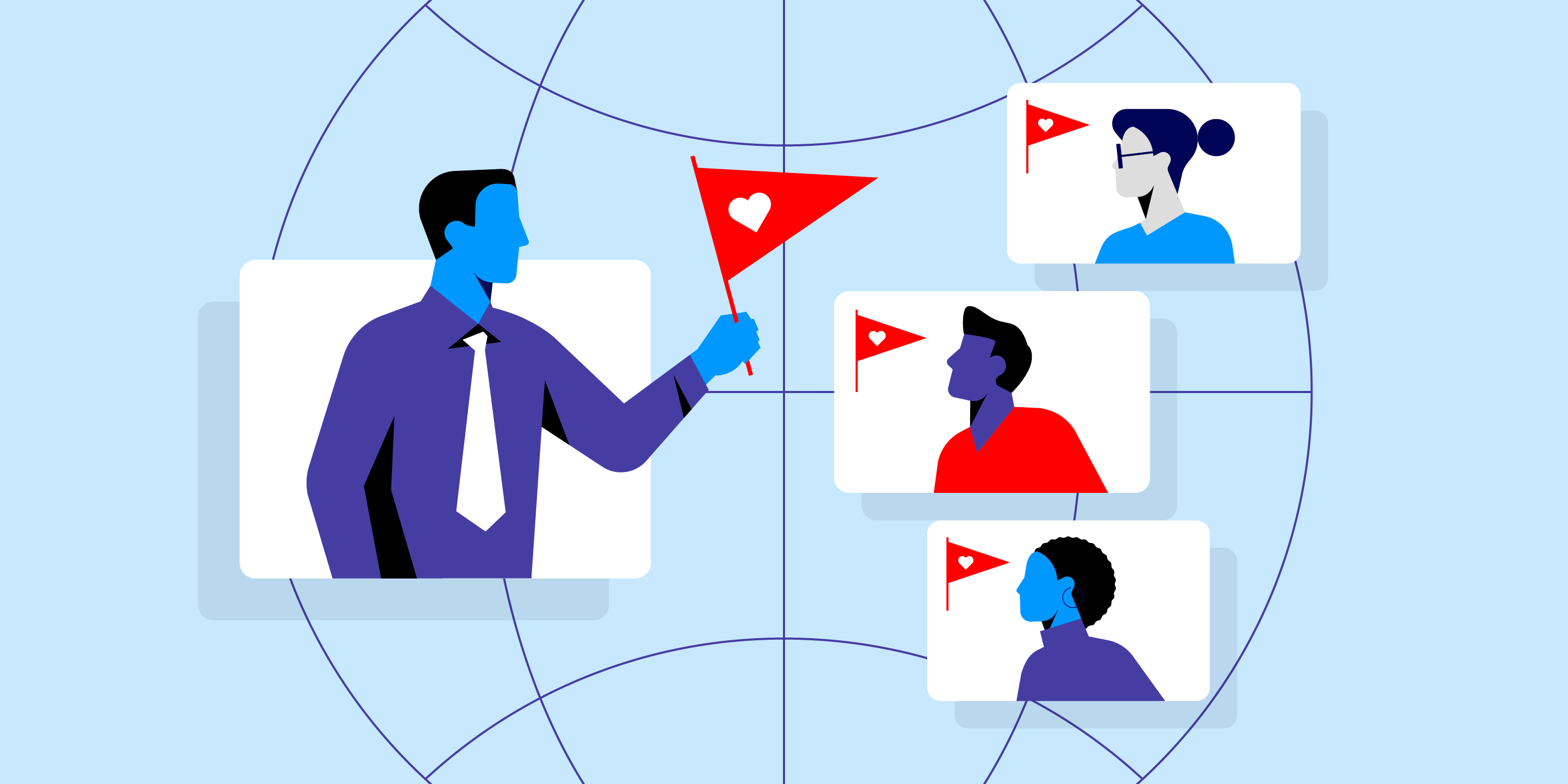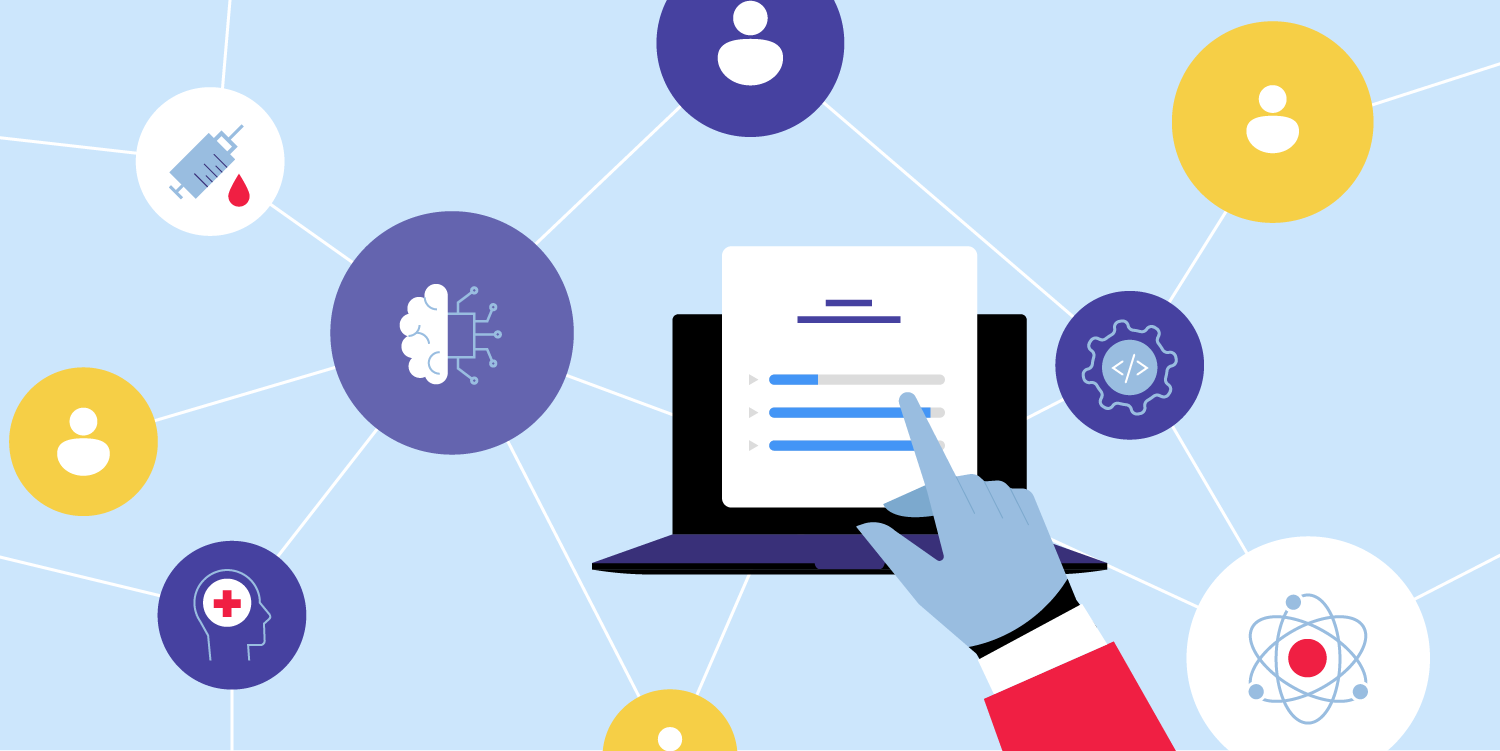Remote Onboarding Best Practices to Acclimate New Hires Fast

Francesca Di Meglio is an award-winning expert on higher education. Her work has appeared in Bloomberg Businessweek, Business Insider, and other notable publications.
Learn how to create an effective remote onboarding plan that helps new employees hit the ground running.
In the wake of COVID-19, many companies shifted to remote onboarding for the latest hires. Experts predict that remote work or a hybrid of remote and in-person work will continue beyond the pandemic. As a result, companies are building best practices into their remote onboarding plans.
After all, focusing on the onboarding process behooves hiring managers. New hires “come in with rose-colored glasses,” says Victoria Pelletier, Vice President of Talent and Transformation at IBM North America. “Onboarding is critical to making a good impression.” Data supports that: “Organizations with a strong onboarding process improve new hire retention by 82% and productivity by over 70%,” according to Brandon Hall Group.
So, remote onboarding best practices are important because some employers cannot wait for wide vaccine distribution to bring on new team members in person. In fact, 60% of companies have hired a new employee between the beginning of the pandemic and August 2020, according to a survey of 234 US employers by The Manifest, a business news and data website.
Traditional employers are getting creative about onboarding new employees, and tech companies already familiar with remote work are improving upon previous processes. Here are some remote onboarding best practices to institute at your company.
Create a Community
Developing a sense of community, which is necessary for effective teamwork, is one of the challenges of the remote onboarding experience. To overcome this, many organizations have multiple new hires start on the same day, introducing them to the organization with a group video call. IBM is one such company that takes the group orientation approach. New hires form cohorts to bond and prepare for teamwork, says Pelletier.
Alisa Avelar, Toptal’s Director of People, relies on a “village” to let new hires know they are not alone and to open up the lines of communication. Hiring managers are important, but so is IT, who helps employees set up their computers and deal with troubleshooting. Other team members, who will be working directly with the new employee on projects, figure into the onboarding process too—they meet one-on-one with new hires within their first two weeks.
The focus, says Avelar, is ensuring clarity and connection. “If I can make a connection with you, even if everything goes wrong on day one, you will forget the hiccups,” she says.
Be Deliberate About Training
Working remotely requires more intentionality, especially when someone is new. Human resources at many organizations provides written documents with ample instructions about what to sign, how to access important platforms, and other practical first-week chores.
In addition, many employers supply training videos that allow the new hire to learn at their own pace, one of the benefits of remote work, says Avelar. Still, to combat inevitable issues, such as not being sure what work to do or how to use a tool, both employee and employer must make an effort.
“There’s a lot of information that is thrown at people, and it’s structured,” says Stephen Brown, COO of LedgerGurus, an e-commerce accounting firm that has been onboarding employees remotely since its inception in 2014 and has 45 employees across seven states. “But it goes in one ear and out the other.”
Training covers general processes and tools, but it has not covered specific work, says Brown of his company, and the training’s speed does not give new hires time to use their knowledge.
As a result, LedgerGurus is considering deploying a train-as-needed model to help new hires practice what they learn and measure their progress. “We are exploring a skills review process to ensure that what was trained was understood and applied effectively,” says Brown.
Pair New Hires With a Buddy
Those who have a best friend at work are seven times more likely to be engaged in their job and perform better, according to Gallup. This has driven many organizations to establish online buddy programs. Radware, a data protection and cybersecurity company that has always had online onboarding, offers both a buddy program, to give new employees access to someone who can answer questions about general company processes—such as how to file for benefits—and a mentor program, which pairs recent hires with someone one or two notches above them to address role-specific concerns.
At Radware, the buddy program is an essential part of the onboarding process, says Roseanne Donohue, Senior Manager, Talent Acquisition, North America, “especially in these times when people feel like an island. It is important to have someone you can check in with,” says Donohue.
LedgerGurus also pairs new hires with a virtual buddy. In the pre-pandemic days, LedgerGurus would match new hires with someone who lived nearby and could take them to lunch on their first day. Brown is hopeful to bring back that onboarding program when it is safe.
“The main reason we do the in-person lunch is to help people feel connected,” says Brown. “Being 100% remote can be isolating, so we want to send a message, if possible, that they are not alone and part of a team on day one.”
Check in With New Remote Employees
Whether new hires are onboarding in person or online, they need follow-up, but that becomes more important when colleagues are not getting face time. About 13% of people believe onboarding ends after just one week, according to a survey of 350 organizations by Kronos, a company that helps with work management and cloud solutions.
But the learning must continue, says Brown. He employs the 30/60 process: Supervisors check in with new hires after their first 30 days and then after their first 60 days to track progress and address questions.
Other employers offer different opportunities to engage with new hires. For example, IBM’s Chairman and CEO Arvind Krishna and President James M. Whitehurst host 30-minute virtual meetings during which they update the entire company and answer employee questions, says Pelletier.
Stephen Pedder, HR Director at The Influence Agency, a boutique digital marketing agency with 35 employees, says his organization exposes new hires to the whole company over the first two weeks. It starts with those workers meeting with Pedder and the agency’s four partners, as soon as logistically possible, to learn about the organization’s culture.
“This sets the tone of the relationship and shares our company values. We also highlight some fun things we do as a company to intrigue them,” says Pedder. “We go over the departments and their responsibilities, explaining where they fit into the team and how they’ll add value.”
Get Social
Remote onboarding is only as effective as the connection managers can make between new hires and the organization. “There are no pods or people sitting in the same area with you,” says Avelar. “You need Slack, Google Teams, or something to chat.” Pedder additionally recommends spotlighting the company culture on social media accounts, such as Instagram, to foster a sense of community.
“We highlight new employees and share five fun facts about them,” says Pedder. “And we showcase social events that we do for our team. All this leads to excitement on their first day, and we ride this wave through their onboarding.”
Matt Ting, Founder of Peak Frameworks, a private equity recruiting company, suggests new hires schedule virtual coffee breaks with colleagues. The process has to be a two-way street, he insists. “When the culture is not in place, you have to go above and beyond to build it yourself,” says Ting.
Another option for scheduling conversations is Donut, Avelar says. This app randomly matches colleagues who rarely or never communicate with one another to get more people acquainted throughout the company. Avelar says this kind of app keeps onboarding remote workers connected beyond those first few days.
Avelar adds that companies have to make sure people feel they belong. “You do that by connecting them with those who have similar interests,” says Avelar, who, during onboarding, shares various groups, including book clubs and cooking forums, that might interest new hires. Plus, they participate in get-to-know-you events via Zoom. “Communication needs to be thoughtful. No one is going to walk by your desk and say, ‘Hi!’”
Keep Improving Remote Onboarding
Remote onboarding, like remote work, itself, is the future of the workplace. Pelletier says the “new abnormal” is here to stay.
Avelar predicts virtual onboarding will continue to evolve. She is continually getting feedback and developing new remote onboarding best practices. For example, if recent hires report that they are having trouble with a particular online tool they need to use, Avelar might have the team produce a video of step-by-step instructions.
“Onboarding is always a work in progress,” she says. “You are learning every day.”

Francesca Di Meglio is an award-winning expert on higher education. Her work has appeared in Bloomberg Businessweek, Business Insider, and other notable publications.




